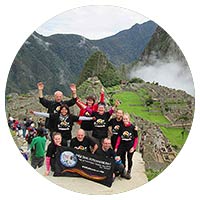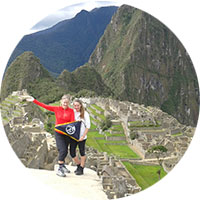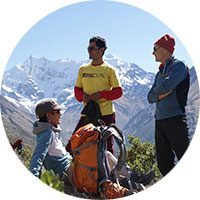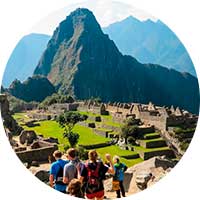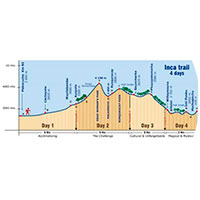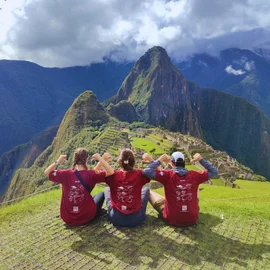Archaeological Sites on the Inca Trail
The Classic Inca Trail is much more than a hiking route—it’s a journey through living history, with breathtaking ruins, ancient pathways, and stunning viewpoints scattered all along the way. Here’s a look at some of the most remarkable archaeological sites you’ll encounter before, during, and after your trek to Machu Picchu.
Before the Inca Trail
Ollantaytambo
Located in the Sacred Valley near Cusco, Ollantaytambo is a charming town and one of the best-preserved Inca sites still in use today.
Once an important royal estate of the Inca emperor Pachacuti, it later became a stronghold of Inca resistance against the Spanish conquest. Ollantaytambo is also the main train station for travelers heading to Aguas Calientes and Machu Picchu.
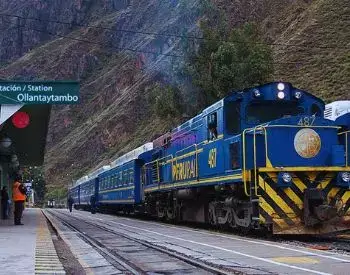
Canabamba
A lesser-known site, Canabamba served as a small administrative checkpoint for the Incas, controlling movement and resources through the valley.
Along the Classic Inca Trail
Llactapata (or Llaqtapata)
Meaning "High City" in Quechua, Llactapata was a small Inca town and agricultural center. Today, it’s one of the first significant ruins hikers visit along the trail, offering a glimpse into Inca urban planning.
Wilka Rakay
Situated above Llactapata, Wilka Rakay likely functioned as a strategic checkpoint, overseeing the valley and the flow of people and goods.
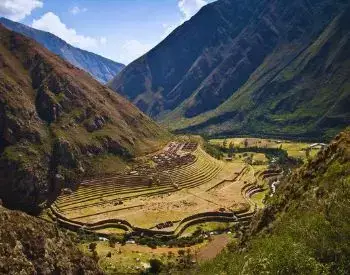
Wayllabamba
This is both a modern village and an archaeological site. In Inca times, it was an administrative center, or "llacta", managing resources and travelers through the region.
Yuncachimpa
A popular resting spot for trekkers, Yuncachimpa offers basic facilities and is one of the last places to pick up supplies on the way to Dead Woman’s Pass.
Llulluchapampa
The final stop to stock up on essentials before the high-altitude passes. From here, the trail climbs steeply toward the highest point.
Dead Woman’s Pass (Warmiwañusqa)
At 4,215 meters (13,828 ft), this is the highest point on the Inca Trail. Named “Warmiwañusqa” in Quechua, it means “Dead Woman” due to the mountain’s silhouette resembling a woman lying on her back gazing at the sky.
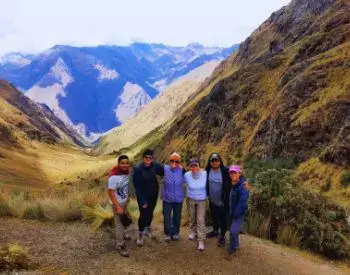
Paccaymayu
This scenic valley is home to one of the main campsites on the trail, situated at 3,500 meters. The area is surrounded by lush high-altitude vegetation and stunning views.
Runkuraqhay & Runkuraqhay Pass
Runkuraqhay is an oval-shaped ruin believed to have served as a tambo or administrative checkpoint. From the nearby pass, you get sweeping views of both the valley behind and the new landscapes ahead.
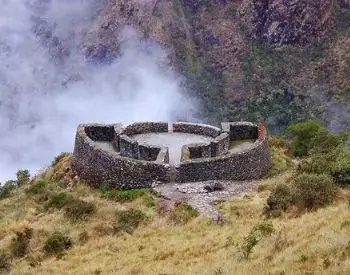
Sayacmarka
Translating to “Inaccessible Town”, Sayacmarka is perched dramatically on a ridge. It’s thought to have been both a village and a ceremonial site, dedicated to mountain worship.
Chakiccocha
Meaning “Dry Lake” in Quechua, Chakiccocha is another campsite along the trail, surrounded by peaceful Andean scenery.
Phuyupatamarka
Known as “The Town Above the Clouds”, Phuyupatamarka combines an archaeological complex with incredible viewpoints. It was likely an important administrative center.
Inti Pata
A series of agricultural terraces believed to have been used by the Incas for farming offering panoramic vistas of the surrounding valleys.
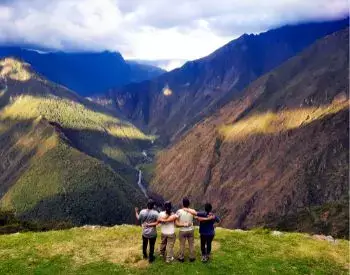
Along the Classic Inca Trail & Short Inca Trail
Wiñayhuayna
Meaning “Forever Young”, Wiñayhuayna is a spectacular ruin with terraces and temples. It’s one of the last major sites before reaching Machu Picchu and was likely a ceremonial place to honor water and fertility.
Intipunku (Sun Gate)
The final gateway on the Inca Trail, Intipunku or “Sun Gate” was used by the Incas during solstice rituals. From here, you’ll get your first unforgettable view of Machu Picchu emerging from the mist.
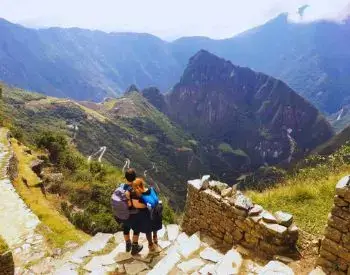
Along the Short Inca Trail
Chachabamba
Believed to be a water shrine, Chachabamba features ceremonial baths and channels, highlighting the Inca’s sophisticated hydraulic engineering.
Choquesuysuy
Another smaller site along the lower trails, Choquesuysuy is thought to have been dedicated to agriculture.
After the Inca Trail
Machu Picchu
Of course, the crown jewel of your journey is Machu Picchu itself—known as the “Lost City of the Incas” or the “City in the Clouds”. Designated as one of the New Seven Wonders of the World, its awe-inspiring stone architecture and dramatic setting atop the mountains leave visitors speechless. It’s the perfect culmination of your trek through history.
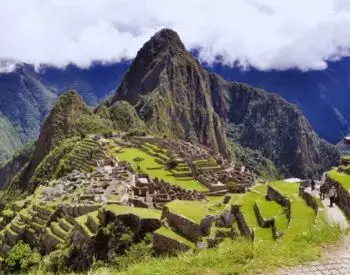
Plan Your Inca Adventure
Walking the Inca Trail is not just a physical journey—it’s an immersion into the heart of an ancient civilization. Each ruin and viewpoint tells a story of the Inca’s incredible ingenuity, spirituality, and connection to nature. Ready to explore these wonders for yourself? Contact us to start planning your adventure along the legendary Inca Trail to Machu Picchu

